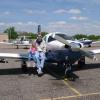-
Posts
1,832 -
Joined
-
Last visited
-
Days Won
4

mooniac15u replied to ragedracer1977's topic in General Mooney Talk

mooniac15u replied to ragedracer1977's topic in General Mooney Talk

mooniac15u replied to nightmoves's topic in Vintage Mooneys (pre-J models)

mooniac15u replied to nightmoves's topic in Vintage Mooneys (pre-J models)

mooniac15u replied to nightmoves's topic in Vintage Mooneys (pre-J models)

mooniac15u replied to nightmoves's topic in Vintage Mooneys (pre-J models)

mooniac15u replied to nightmoves's topic in Vintage Mooneys (pre-J models)

mooniac15u replied to nightmoves's topic in Vintage Mooneys (pre-J models)

mooniac15u replied to adverseyaw's topic in Modern Mooney Discussion

mooniac15u replied to BodyshopDave's topic in Modern Mooney Discussion
We have placed cookies on your device to help make this website better. You can adjust your cookie settings, otherwise we'll assume you're okay to continue.